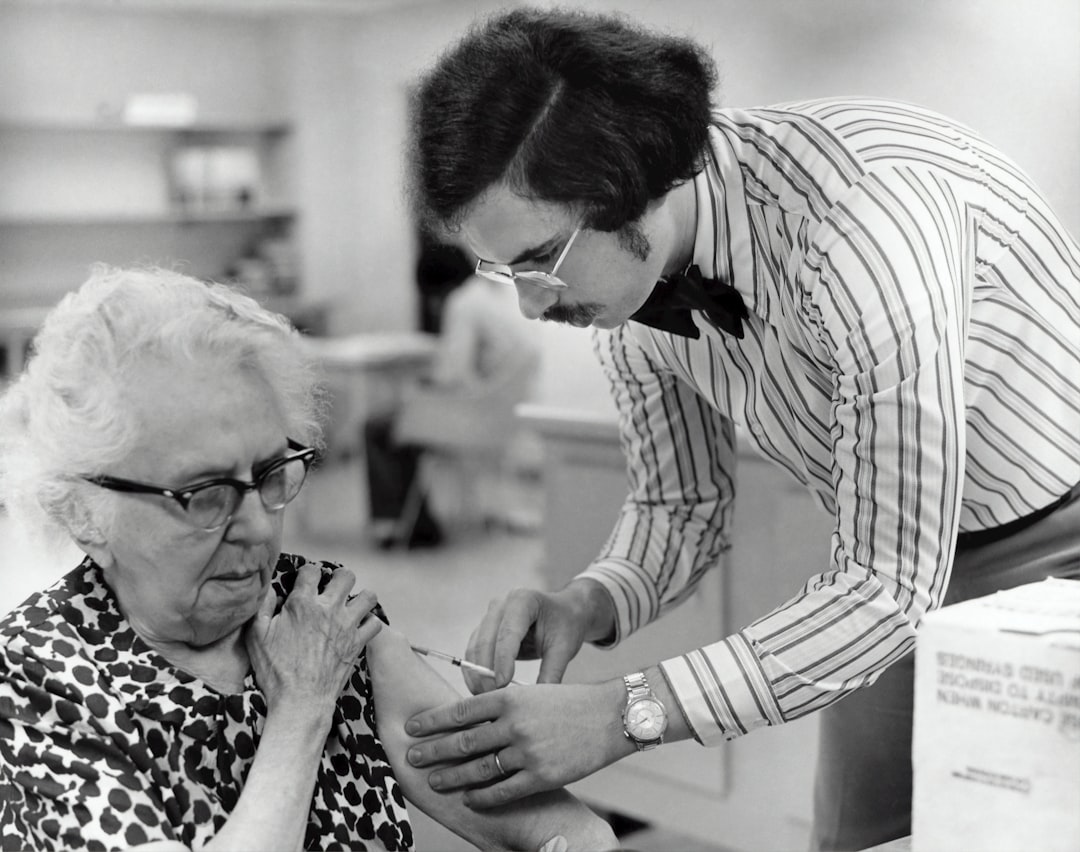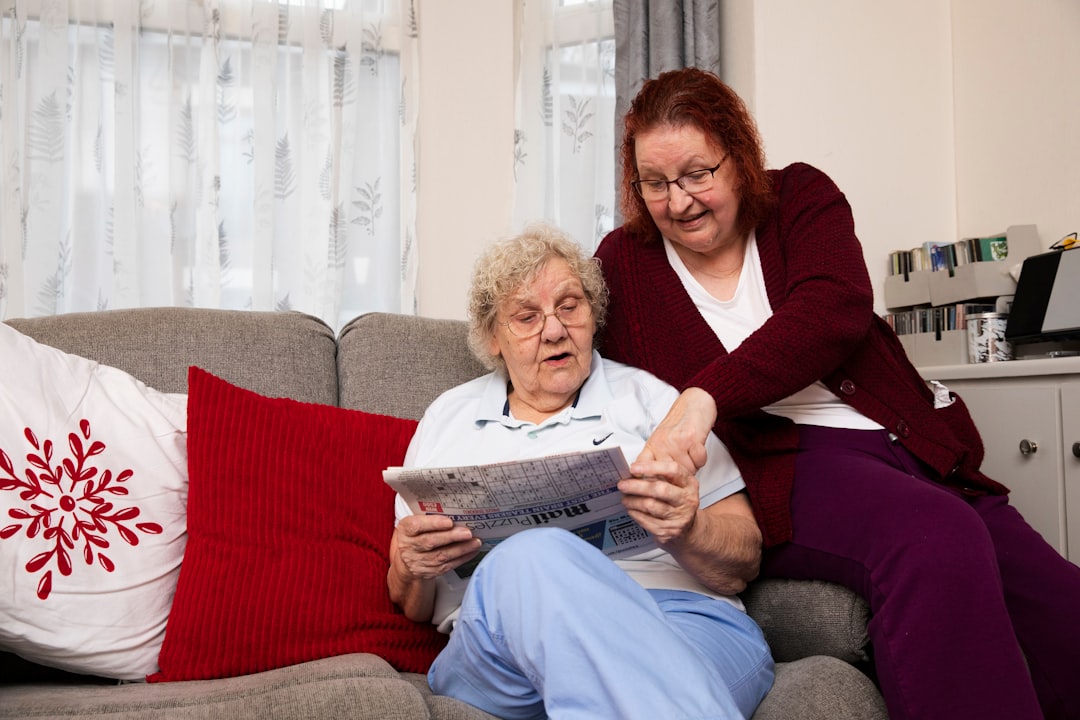

Engage prospects with a scan and streamline customer engagement with FREE QR code marketing tools by Sona – no strings attached!
Create a Free QR CodeFree consultation

No commitment

Engage prospects with a scan and streamline customer engagement with FREE QR code marketing tools by Sona – no strings attached!
Create a Free QR CodeFree consultation

No commitment
Long-term care insurance providers face mounting pressure to deliver not only quality coverage but also meaningful, real-time feedback from policyholders. Frequently, high-value prospects or dissatisfied customers pass through critical touchpoints unnoticed because feedback channels are outdated or disconnected from core systems. In an industry where trust, transparency, and customer satisfaction directly impact both conversion and retention, traditional methods of gathering feedback such as mailed surveys, outbound calls, or in-person interviews are slow, fragmented, and resource-intensive. This often results in missed opportunities to address customer needs or risks, simply because relevant engagement signals never make it into the CRM or analytics workflows.
QR codes have emerged as an agile, frictionless solution to capture feedback at the exact point of service in offices, partner locations, or through mailed correspondence. With prospects increasingly reluctant to complete lengthy forms or follow up by phone, QR codes meet customers in the moment, enabling timely, relevant input before interest or dissatisfaction fades. By instantly connecting offline interactions like nursing home tours, assisted living consultations, or claims discussions to digital feedback loops, QR codes in insurance make it easier for customers to engage, rate service quality, and share concerns without the need for app downloads or complicated web navigation.
For long-term care insurance providers, integrating QR codes transforms static touchpoints into dynamic data collection moments. Instead of feedback being scattered or untracked, responses can be captured and synced directly with CRM systems, closing the gap between customer experience and operational follow-through, as outlined in Sona QR product overview. This approach expedites actionable insights and fosters a sense of partnership and responsiveness between insurers and their policyholders, driving strategic improvements that matter most in today’s regulated, consumer-driven landscape.

QR codes bridge the physical-to-digital gap by converting every customer-facing surface into an opportunity for feedback. Many insurance providers still find their most valuable customer signals missed entirely, either because prospects choose not to fill out forms or because data is siloed and never reaches marketing or operations teams. By using QR codes intentionally, you can create fast, reliable pathways from in-person interactions to structured feedback that your teams can act on quickly.
Here’s how to maximize QR impact and avoid the costly problem of incomplete or fragmented feedback:
Modern solutions enable each of these steps to be automatic, linking scan data directly with your CRM to drive follow-up actions and close the loop on both positive and negative feedback. Platforms such as Sona QR and Sona.com facilitate dynamic QR management, analytics, and data synchronization so teams can move from raw signals to concrete interventions without manual effort. Start creating QR codes for free: Start creating QR codes for free
A leading provider replaces paper survey pads at partner care facilities with branded QR codes on welcome brochures and signage. Customers scan to access a mobile-friendly feedback form, and responses flow straight to the support team dashboard, increasing completion rates by 40 percent while lowering manual entry costs by 60 percent. Because the survey is short and mobile-optimized, family members submit feedback while the experience is fresh, producing more specific and actionable insights.
Within 60 days, the marketing team can identify which facilities and agents are driving satisfaction and which are triggering churn risks, an insight previously lost in fragmented offline data. Facility-level dashboards prompt targeted coaching, while promoters receive referral and advocacy requests, turning feedback into growth.

Capturing and acting on real-world feedback is often hampered by offline-to-online gaps, anonymous engagement, and data fragmentation. These pain points directly impact the ability to personalize outreach or prevent account churn in a highly regulated, service-driven category. QR codes solve these operational and strategic gaps in several key ways, especially across the materials and scenarios common to long-term care insurance.
QR codes are particularly powerful because they are fast, familiar, and nearly universal on modern smartphones. Unlike phone calls or long email forms, they require minimal effort. Unlike generic URLs on print, they produce specific, trackable events. Here are the advantages most relevant to this industry:
When feedback is surfaced accurately and efficiently, long-term care insurance providers can more effectively prioritize upsell opportunities, personalize content, and address risks before they grow. Over time, that translates into stronger retention, higher referral rates, and better regulatory outcomes.

Providers often struggle to tie engagement back to the right policy, segment, or moment in the customer journey. Choosing the right QR code formats and destinations helps overcome those limitations, especially for feedback collection and service experiences. In this vertical, formats that lead to concise, mobile-first experiences are the most effective.
Dynamic QR codes are particularly useful. They allow you to edit destinations after printing, add UTM parameters for attribution, and collect performance data that can be fed into your CRM. Static codes still have their place in evergreen applications, but dynamic codes unlock ongoing insight and optimization. See QR codes in marketing for best practices.
Dynamic QR codes provide further value by tracking responses across policy types and segments. You can identify trends by product line, region, facility, agent, or life stage, then adjust messaging or service processes based on what the data reveals.

Many providers overlook feedback collection at key moments, resulting in unseen churn risks and missed upsell or cross-sell opportunities. Strategic QR code placement turns routine interactions into measurable signals and gives teams a reliable workflow for follow-up. The goal is to meet customers where they already are and reduce the effort required to share their experience.
Focus on moments with high emotion or meaningful decisions. These are the times when a timely prompt produces richer, more candid insight and when a swift response can have an outsized effect on satisfaction and loyalty.
Each deployment builds a more complete picture of the customer journey. Over time, you will identify which placements produce the highest signals, which messages resonate, and where to allocate resources for continuous improvement.

Operational pain points such as incomplete customer records and missed engagement signals can be addressed with targeted QR-powered feedback flows. The most effective use cases are specific, quick to complete, and routed to the right teams for follow-up.
Start by implementing a few high-impact flows, then scale once processes and analytics are in place. Integrate scan data into your CRM so every response enriches the customer profile and triggers appropriate action. For more vertical strategies, see Sona QR for insurance.
In each scenario, feedback that once required manual tracking or was scattered across paperwork now feeds directly into unified systems. This reduces cycle time for fixes, increases the accuracy of sentiment measurement, and provides leaders with dashboards that inform staffing, training, and messaging decisions.
Fragmented data often undermines retargeting and follow-through. QR scan data, especially when mapped to journey stages, enables nuanced, account-specific audiences that can be nurtured with relevant content. By deploying multiple codes across touchpoints, you can capture intent, context, and timing without relying on guesswork.
The key is to align code placement with a specific stage or action, then use that signal to drive a next step. Over time, these small pathways compound, producing a connected experience that feels personal and timely. For tactical execution, see Sona’s retargeting playbook.
With this approach, providers can retarget based on real behavior rather than broad assumptions. You might distinguish policyholders versus prospects, adult children caregivers versus the insured person, or financial advisors versus care coordinators. Each group receives content and outreach that maps to their role and needs.
Many long-term care insurers struggle with siloed data and inconsistent engagement between offline and online channels. QR codes act as the connective tissue that turns print and in-person touchpoints into digital signals and next steps. When used across your marketing mix, they make every channel measurable and support a unified customer experience.
Place QR codes wherever you distribute physical assets or host in-person interactions, then instrument the journeys so scans trigger meaningful workflows. This simultaneously improves service quality and marketing effectiveness.
Advanced QR platforms consolidate scan data from these placements, sync it to your customer database, and trigger automated workflows. Your teams see the same signals, which reduces handoffs and accelerates resolution.
Define a clear business goal and select a feedback moment that supports it. For long-term care insurers, high-value use cases include claims satisfaction, post-admission facility feedback, and annual policy review experience checks. An example: Scan to tell us about your facility tour experience, designed to surface concerns before admission decisions.
Choose the format that fits your tracking and agility needs. Static codes are suitable for unchanging destinations, but dynamic codes give you the ability to update links, add tracking, and run A/B tests without reprinting.
A QR code is only as effective as its design and context. Brand it, frame it, and give it a compelling call to action. Then test scannability in real-world conditions.
Roll out your QR codes in the places where they will be seen and used by the right people. Think in terms of volume, relevance, and timing.
Measure what happens after the scan and use those insights to improve the experience. Optimization is where QR investments compound.
Data fragmentation and the inability to connect feedback to outcomes are persistent challenges in insurance. QR-powered campaigns produce granular, actionable signals that can be joined with CRM and revenue data to show what works and why. For a broader framework, read Sona’s offline attribution guide. The objective is not just to collect more feedback, but to turn each scan into a step forward in the relationship.
By integrating your QR platform with core systems, you transform a lightweight engagement into a measurable event in the customer record. This elevates analytics from page views and clicks to meaningful service and revenue outcomes.
With Sona QR for scan capture and Sona.com for identity resolution, buyer journeys, and multi-touch attribution, insurers can see the full path from scan to renewal. You will understand how offline prompts and real-world experiences influence digital outcomes and long-term value.
Once you launch your first campaign, scale success by standardizing what works and experimenting with new placements. Aim for a repeatable framework that your teams can apply across products, facilities, and regions.
Remember that engagement depends on trust. Clear privacy language, concise forms, and rapid follow-up increase participation and produce higher-quality data.
Strategic deployment within your operating model ensures touchpoints are never wasted. Every scan can enrich the customer profile, inform a better conversation, and yield a measurable lift in satisfaction or revenue.
Real-world results illustrate how QR feedback can shift outcomes quickly. Here are ideas for inspiration that you can adapt to your business model and compliance requirements.
Consider piloting a small set of placements, then expand to the full network once workflows, analytics, and staff coaching are refined. Iteration is typically the fastest route to durable results.
Adapt these examples to your compliance framework by including clear disclosures and secure submission processes. The aim is to create a feedback culture that is easy, respectful, and genuinely useful to customers and staff.
Successful QR programs combine strong design, relevant prompts, and disciplined follow-up. Equally important is avoiding mistakes that suppress scans or produce low-quality data. Use these expert tips to keep your program healthy and high-performing.
Benchmark performance over time. Track scan rates by placement, completion rates by survey length, and cost per feedback response. Use these leading indicators to guide content and operational changes.
Industry leaders recommend aligning QR metrics with business outcomes such as saved renewals, shortened resolution times, and increased referral volume. This linkage elevates QR from a tactical tool to a strategic driver of customer experience and growth.
QR codes now offer long-term care insurance providers a direct, measurable way to transform every policyholder interaction into a continuous feedback loop. By embedding QR-powered feedback flows across brochures, appointment packets, event materials, and care facilities, insurers can achieve instant engagement, foster a more connected client experience, and unlock actionable data tied to revenue growth and satisfaction. These insights enrich unified customer profiles and marketing workflows, closing gaps that once led to missed opportunities or fragmented engagement.
This holistic approach moves organizations beyond legacy, analog workflows, enabling higher response rates, faster insight, and more responsive operations. Modern QR strategies, supported by integrated analytics, make it possible to proactively identify churn signals, surface upsell potential, and personalize outreach in ways traditional tools cannot match. With scalable solutions supporting every touchpoint and journey stage, long-term care insurance providers can deliver quality at scale while maintaining compliance and industry standards.
Make every encounter count with streamlined, data-driven feedback capture, and build a smarter, more customer-centric insurance business founded on trust, insight, and agility. Platforms like Sona QR and Sona.com help you generate, track, and attribute QR engagement so your teams can act on what customers tell you, right when it matters most.
QR codes have transformed long-term care insurance providers from traditional feedback collection methods into dynamic, real-time engagement tools. By seamlessly gathering customer insights, they enable providers to enhance client experiences, streamline policy improvements, and strengthen trust—all while capturing valuable data that drives smarter business decisions. Imagine instantly knowing which feedback channels resonate most with your clients and acting swiftly to improve service quality and retention.
With Sona QR, you can create dynamic, trackable QR codes in seconds, update feedback campaigns without reprinting materials, and connect every scan to actionable insights that improve customer satisfaction and policy offerings. No more missed feedback or outdated surveys—just efficient, measurable engagement that empowers your long-term care insurance business to thrive.
Start for free with Sona QR today and turn every scan into valuable feedback, stronger client relationships, and lasting growth.
QR codes enable fast, frictionless feedback collection at key touchpoints, improving response rates, capturing real-time insights, reducing manual effort, and syncing data directly with CRM systems to enhance customer experience and operational follow-through.
Providers can place QR codes on policy packets, care facility signage, mailers, and event materials to prompt mobile-friendly surveys or contact options, capturing timely, specific feedback that feeds smoothly into analytics and CRM workflows for immediate action.
Dynamic QR codes linking to mobile-friendly surveys, embedded forms, vCards for contact saving, SMS or email prefill messages, and app downloads are effective formats that offer flexibility, trackability, and ease of use for customers.
QR codes connect offline materials and in-person interactions directly to digital feedback channels, ensuring that insights are captured immediately, tracked accurately, and integrated with customer records to enable timely responses and service improvements.
Key steps include defining clear business goals, choosing the right QR code type, designing branded and scannable codes with calls to action, deploying them strategically across high-impact channels, and tracking performance to optimize engagement and outcomes.
Integration enriches customer profiles with real-time sentiment data, enables automated workflows for follow-up, improves segmentation and personalization, helps identify churn risks, and connects feedback directly to revenue and retention metrics.
QR codes reduce reliance on resource-intensive methods like mailed surveys and phone calls, lower manual data entry costs, and scale efficiently to thousands of customers at minimal incremental expense, freeing resources for higher-value activities.
Effective placements include policy packets, care facility signage, claims mailers, nursing home welcome folders, event materials, direct mailers, appointment packets, lobby displays, and renewal notices to capture feedback at moments of high customer engagement.
Providers can collect post-consultation satisfaction, claims process clarity and timeliness, facility experience ratings, service explanation clarity, and overall customer sentiment to identify issues, improve service, and detect upsell opportunities.
Dynamic QR codes allow updates to destinations after printing, track detailed scan data, support A/B testing, and enable ongoing optimization, while static codes are fixed and suitable for unchanging information but offer less flexibility and insight.
Use Sona QR's trackable codes to improve customer acquisition and engagement today.
Create Your FREE Trackable QR Code in SecondsJoin results-focused teams combining Sona Platform automation with advanced Google Ads strategies to scale lead generation

Connect your existing CRM

Free Account Enrichment

No setup fees
No commitment required

Free consultation

Get a custom Google Ads roadmap for your business






Launch campaigns that generate qualified leads in 30 days or less.
